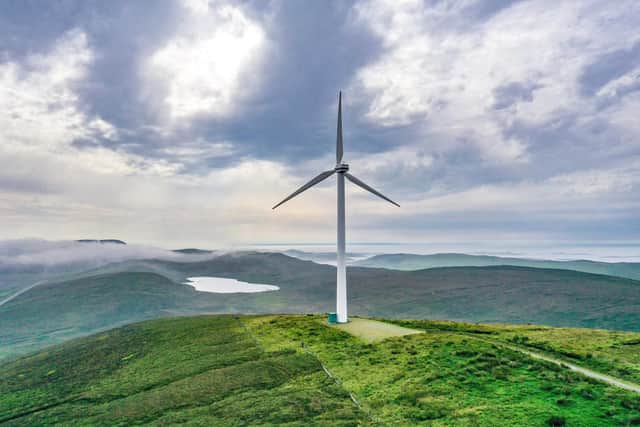Scotland's wind energy bonanza amid fuel poverty makes case for independence – Kenny MacAskill
We’re used to energy acronyms and initials in Scotland. Ofgem, SP and SSE are part of our lexicon. Now there’s two more. And they’re going to be significant, even controversial in parts.
ESO is the Electricity System Operator, in fact it’s National Grid ESO and part of that privatised combine, mostly foreign owned, which operates the grid. This new group will neither produce nor deliver energy, but offer strategic oversight of the electricity supply network, overseen by Ofgem. Its plan is the TCSNP – Transitional Centralised Strategic Network Plan – and it’ll seek to get electricity from where it’s produced to where it’s needed.
Advertisement
Hide AdAdvertisement
Hide AdNow all that’s quite sensible. The current electricity, never mind energy, market is dysfunctional. The National Grid has huge capacity issues which is why we’ve the absurdity of 17 per cent of onshore turbines being switched off annually, not through lack of wind but inability to access the grid. Compounding that, we pay operators a premium to switch off, rather than deliver. Expansion of wind onshore but especially offshore, where the turbines are leviathans, increases those pressures.


Huge potential
Scotland already produces nearly the equivalent of its domestic electricity supply from renewables. That’s only going to grow and the potential is huge. Exporting it south where there’s few onshore wind farms and far less offshore potential makes sense.
ESO will be overseeing the HVDC (high-voltage direct current) system. There are already plans to have HVDC subsea cables running from Peterhead and Torness to northern England and carrying energy directly south. A similar cable exists in the west, running from Hunterston to North Wales. Taking Scottish wind energy south.
There’s also a planned wind farm, Berwick Bank, in the mouth of the Forth, which alone would produce more energy than all of Scotland’s households require. Forty per cent of that is proposed to be cabled directly to Northumberland.
The TCSNP will increase that already significant energy transfer by creating additional subsea cabling from Scotland to England. Some offshore wind fields in Scottish waters will see energy cabled south without touching Caledonian shores.
Visual intrusion of wind farms and pylons
In addition, there’s a spinal network – onshore cabling running from northeast Scotland down the east coast and through the Borders to Merseyside. What can be transmitted is far greater above ground than subsea. Much, if not most, will be on pylons as that’s cheaper than underground cabling. There are already issues in Scotland with the visual intrusion into the landscape of wind farms and existing pylons. We can anticipate many more.
Scotland has been blessed with a renewable's bounty, with our geography and climate being to our advantage for perhaps one of the few times in our history. We’ve got electricity and England needs it. But what’s in it for us? Where’s the revenue, where’s the cheap energy for our people, and where’s the jobs and businesses that should go with it? Even the Octopus Energy chief was querying why costs are so high.
We’re getting the visual impact but receiving hardly a jot in return. Work, contracts, revenue and profits all denied us. Nothing makes the case for independence more than an energy-rich nation with its people fuel poor.
Kenny MacAskill is Alba MP for East Lothian
Comments
Want to join the conversation? Please or to comment on this article.
